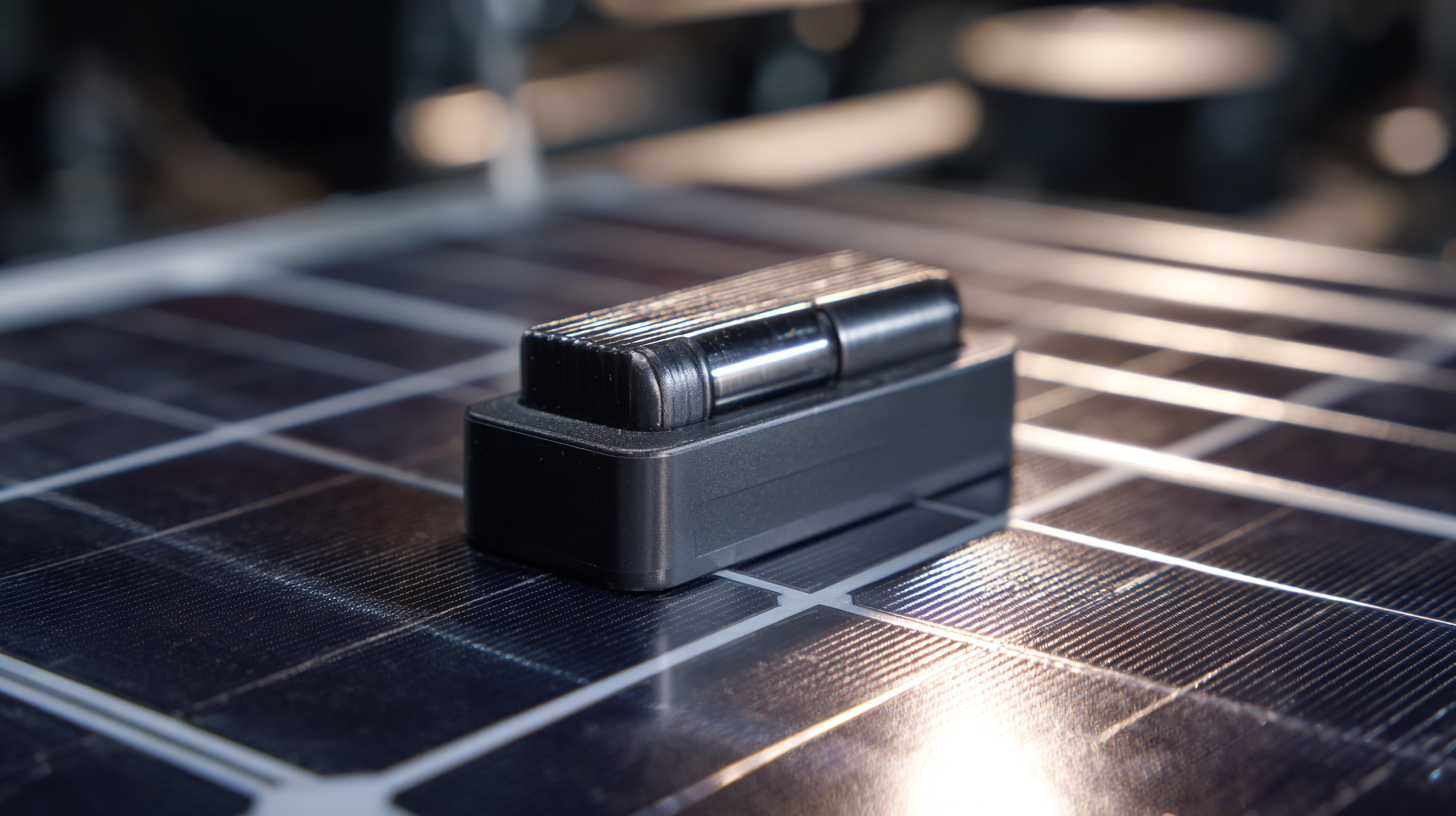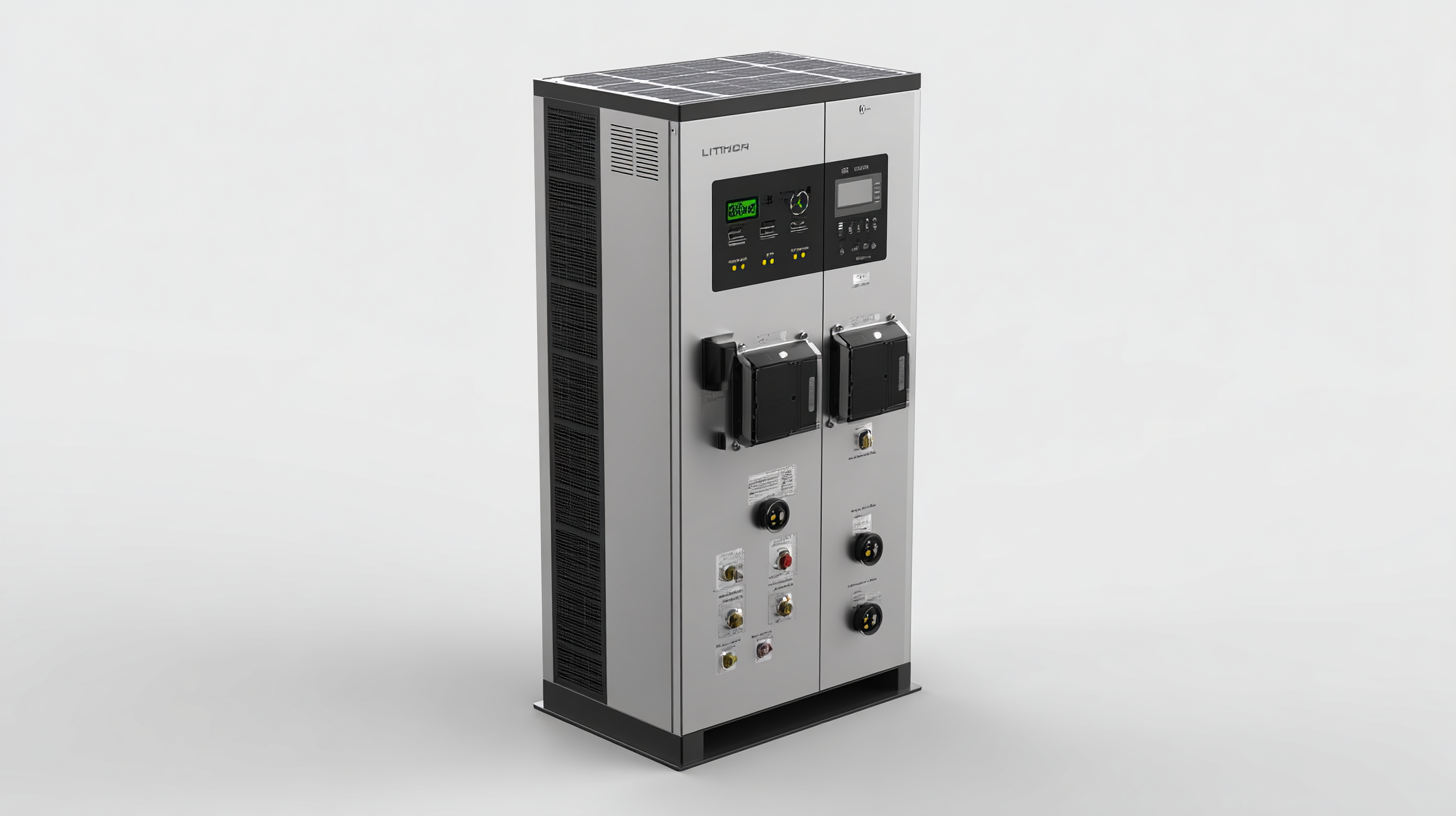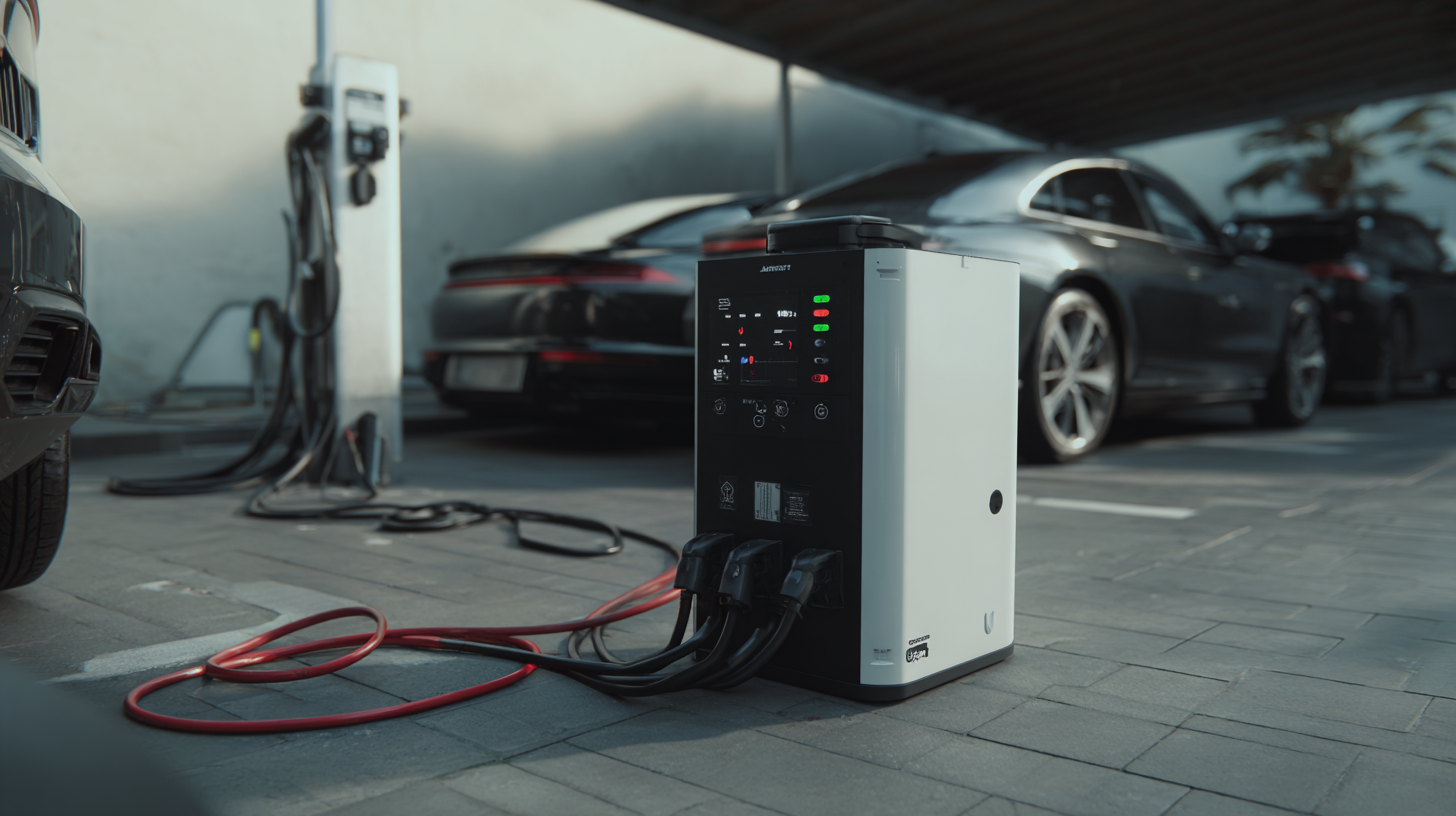Unlocking Performance: In-Depth Technical Specifications of the Best Lithium Ion Solar Battery
The demand for renewable energy solutions continues to rise, with solar power leading the charge in sustainable innovation. Among the crucial components of solar energy systems are Lithium Ion Solar Batteries, which have emerged as the preferred choice for energy storage due to their efficiency and durability. According to a report by BloombergNEF, the global demand for lithium-ion batteries is expected to reach 2,200 GWh by 2030, driven by advancements in technology and the need for cleaner energy sources. These batteries not only provide high energy density and longer cycle life but also support grid stability and energy management solutions, making them an indispensable part of modern solar applications.

This blog will delve into the in-depth technical specifications of the best alternatives available in the market, highlighting their unique attributes and performance benchmarks.
Key Features of Top Lithium Ion Solar Batteries: A Comprehensive Overview
When exploring the best lithium-ion solar batteries, understanding their key features can significantly enhance your renewable energy experience. Leading batteries typically boast high energy density, allowing for greater storage capacity in a smaller footprint. For instance, the most efficient batteries currently available can offer energy densities of up to 250 Wh/kg, which is markedly higher than traditional lead-acid alternatives. This efficiency translates directly into longer-lasting energy storage solutions, essential for optimizing solar energy utilization.
Another critical feature to consider is the depth of discharge (DoD). Top-tier lithium-ion batteries often provide a DoD of 80-90%, enabling users to extract more usable capacity from each charge cycle. This aspect not only maximizes energy availability but also contributes to the overall lifespan of the battery. According to a recent report by the International Renewable Energy Agency (IRENA), improving DoD can enhance the overall system efficiency by up to 15%, making it a vital consideration for those investing in solar setups.
Tips: When selecting a lithium-ion solar battery, prioritize models with high cycle life ratings. This metric indicates how many charge-discharge cycles a battery can undergo before its capacity significantly degrades, with the best batteries offering over 5,000 cycles. Additionally, consider the warranty period offered; reputable manufacturers often provide warranties between 10 to 15 years, reflecting their confidence in the product's longevity and performance.
Comparative Analysis: Performance Metrics of Leading Lithium Ion Solar Battery Brands
When evaluating lithium-ion solar batteries, performance metrics are critical in determining the best options for solar energy storage. Key factors to consider include energy density, efficiency, cycle life, and discharge rates.
Energy density, measured in watt-hours per kilogram (Wh/kg), indicates how much energy a battery can store relative to its weight. A higher energy density means less space occupied and better integration into existing solar setups.
Another vital metric is the overall efficiency of the battery during charge-discharge cycles. Some leading brands boast efficiencies of upwards of 95%, translating to less energy loss and more reliable performance for users. Additionally, the cycle life, defined as the number of complete charge-discharge cycles a battery can undergo before its capacity significantly diminishes, plays a crucial role in the long-term value of the battery. Brands with longer cycle lives not only save users money over time but also minimize the environmental impact by reducing the frequency of replacements.
Discharge rates are equally important, especially for users who may require energy supply on-demand. Brands that provide higher discharge rates enable faster energy delivery, which is essential for meeting immediate power needs. By analyzing these performance metrics, consumers can make informed decisions and invest in lithium-ion solar batteries that enhance their energy sustainability and efficiency.
Understanding Battery Lifespan: Factors Affecting Longevity and Efficiency
When considering the longevity and efficiency of lithium-ion solar batteries, several key factors come into play. One of the most significant is the battery's cycle life, which refers to the number of complete charge and discharge cycles a battery can undergo before its capacity significantly diminishes. High-quality lithium-ion batteries often have a cycle life ranging from 2,000 to over 10,000 cycles, offering a long-term energy solution for solar applications. Proper management of charge cycles, including avoiding deep discharges and frequent recharging, can greatly enhance the lifespan of these batteries.

Temperature is another critical aspect affecting battery performance. Lithium-ion batteries operate most effectively within a temperature range of 20°C to 25°C. Exposure to extreme heat or cold can lead to accelerated aging and reduced efficiency. In addition, the battery's chemistry, such as the materials used for the anode and cathode, plays a role in its overall performance and durability. For instance, batteries utilizing advanced lithium iron phosphate (LiFePO4) chemistry tend to offer improved thermal stability and a longer lifespan compared to traditional lithium cobalt oxide batteries. Understanding these factors is essential for maximizing the efficiency and longevity of lithium-ion solar batteries.
Innovations in Lithium Ion Technology: Enhancements Driving Superior Performance
In recent years, the landscape of energy storage has been transformed by groundbreaking innovations in lithium-ion technology. The global lithium-ion battery market is projected to reach $100 billion by 2025, according to a report by Research and Markets. This growth is largely driven by enhancements in battery chemistry and design, leading to increased energy density and longevity. For instance, the latest lithium-ion batteries now boast energy densities of over 300 Wh/kg, which outperforms traditional lead-acid batteries by more than three times, allowing for more compact and lighter energy solutions for solar applications.
Moreover, advancements in battery management systems (BMS) have played a crucial role in optimizing performance. A report from BloombergNEF highlights that improved thermal management and charge cycling can increase battery lifespan by up to 30%. Features such as intelligent BMS not only extend battery life but also ensure safety and efficiency, making these systems more reliable for solar energy storage. With innovations such as solid-state batteries on the horizon, the potential for enhancing performance continues to expand, promising a future where renewable energy storage is more efficient and user-friendly than ever before.

The Role of Quality Control in Chinese Manufacturing of Solar Batteries
The quality control (QC) in the manufacturing of solar batteries, especially in China, plays a crucial role in influencing the overall performance and reliability of solar energy systems. As highlighted in recent analyses, the global demand for high-quality solar batteries is witnessing unprecedented growth, with the solar cell wafer market projected to soar from $53.89 billion in 2025 to $100.6 billion by 2032, reflecting a compound annual growth rate (CAGR) of 10.15%. This surge emphasizes the need for stringent QC measures to ensure the efficiency and longevity of battery products that will power this expanding sector.
Recent advancements in QC protocols, such as the "20 Guidelines for Photovoltaic Quality Control," are pivotal for manufacturers. The opening bids for China’s top photovoltaic module procurement project by a major Chinese corporation recently demonstrated a noticeable increase in average prices, signaling that improved quality standards are being recognized in the market. Such measures not only enhance product reliability but also bolster China's leadership in the global clean energy landscape, underscoring how rigorous quality control can act as a catalyst for innovation and competitiveness in the solar battery industry.
Unlocking Performance: In-Depth Technical Specifications of the Best Lithium Ion Solar Battery
| Specification | Value |
|---|---|
| Battery Type | Lithium Ion |
| Nominal Voltage | 3.7 V |
| Capacity | 200 Ah |
| Energy Density | 250 Wh/kg |
| Cycle Life | 3000 cycles |
| Charging Time | 5-7 hours |
| Temperature Range | -20°C to 60°C |
| Dimensions (L x W x H) | 400 x 175 x 225 mm |
| Weight | 30 kg |
| Warranty | 10 years |
